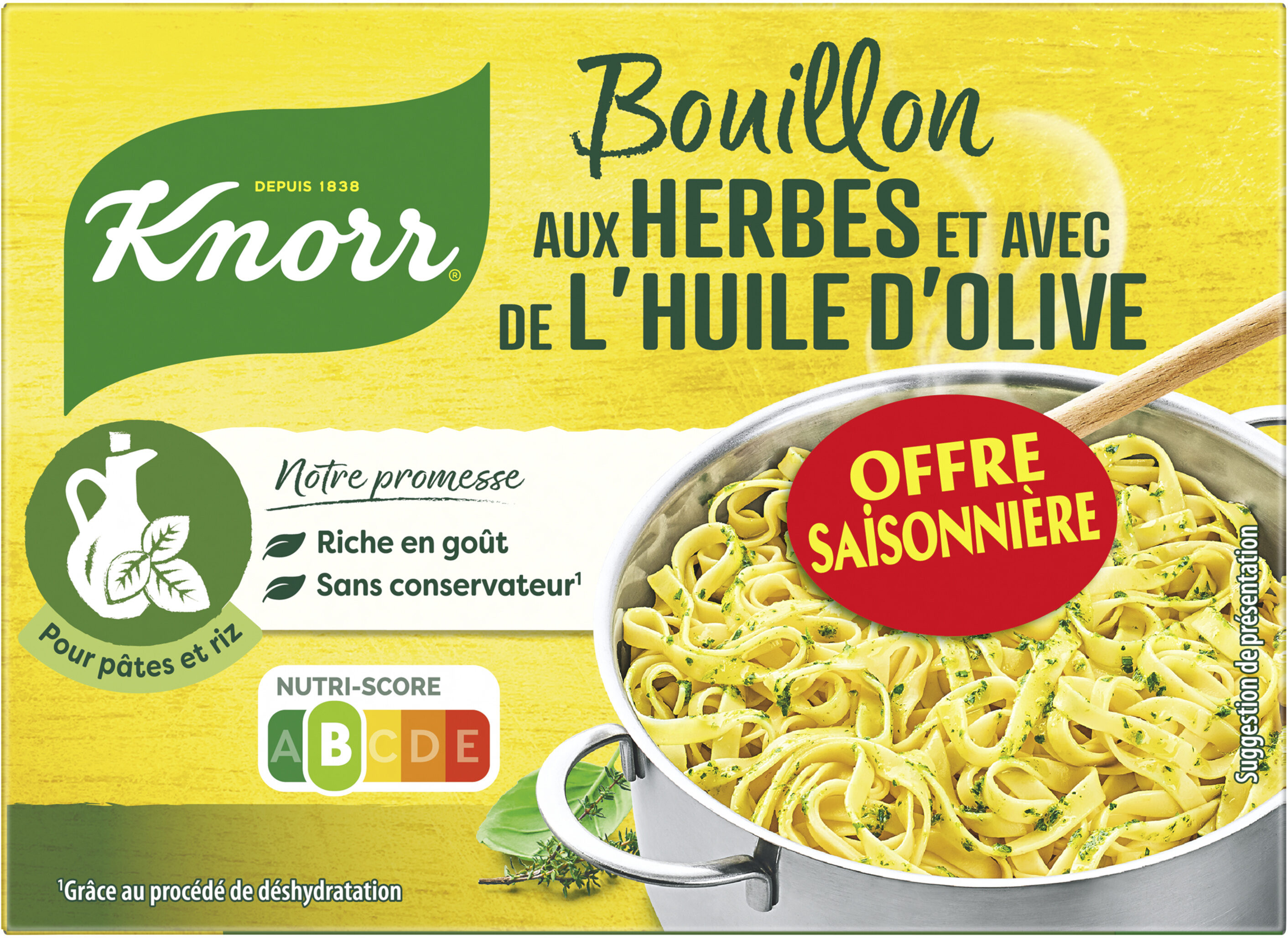Kn bouil herb & ho 15t os - Knorr - 150 g
This product page is not complete. You can help to complete it by editing it and adding more data from the photos we have, or by taking more photos using the app for Android or iPhone/iPad. Thank you!
×
Some of the data for this product has been provided directly by the manufacturer Unilever France.
Barcode: 8722700122821 (EAN / EAN-13)
Common name: Bouillon déshydraté avec basilic, aromatisé - Huile d'olive vierge extra : 2% et graisse de palme.
Quantity: 150 g
Packaging: fr:Conteneur
Brands: Knorr
Categories: Dried products, Dried products to be rehydrated, Broths, Dehydrated broths, Bouillon cubes, Groceries
Labels, certifications, awards:
Vegetarian, No preservatives, Sustainable farming, Vegan, European Vegetarian Union, European Vegetarian Union Vegan, FSC, Green Dot, No colorings, Nutriscore, Nutriscore Grade B, Triman




Origin of the product and/or its ingredients: Portugal
Traceability code: FSC-C156109
Stores: carrefour.fr
Countries where sold: France
Matching with your preferences
Environment
Packaging
Transportation
Threatened species
Other information
Preparation: Conseils d'utilisation : délayez 2 tablettes dans un litre d'eau frémissante. Pour vos plats en sauce, vos légumes et viandes braisés, délayez 1 tablette par quart de litre de liquide en début de cuisson. Inutile de saler. Pour de délicieuses pâtes... Ajoutez 2 tablettes de Bouillon aux herbes et avec de l'huile d'olive Puget KNORR® dans l'eau frémissante de vos pâtes. Pendant ce temps, faites revenir un oignon ainsi que deux courgettes coupées en tranches. Ajoutez un filet d'huile d'olive Puget à vos légumes ainsi que du basilic ciselé et des tomates confites et mélangez-les à vos pâtes.
Conservation conditions: À conserver dans un endroit sec, propre et à l'abri de la chaleur après utilisation.
Customer service: Knorr Relation Consommateurs, Unilever France, 20 rue des Deux Gares 92842 Rueil-Malmaison Cedex
Report a problem
Data sources
The manufacturer Unilever France uses Equadis to automatically transmit data and photos for its products.
Product added on by kiliweb
Last edit of product page on by org-unilever-france-gms.
Product page also edited by date-limite-app, driveoff, ecoscore-impact-estimator, inf, marjo82, melyssa, morganoune, openfoodfacts-contributors, roboto-app, the-redburn, unilever-france, yogoff, yuka.R1prUU42c0hxOFk3aE1BZDBnei8ybzVyMzUyYkJEeWRCdUFjSVE9PQ, yuka.V2E0R0twbzh2OUFnbmRzanhncU0zUHh0N0tIMEREL3JFZFk2SVE9PQ, yuka.YXY4S0dhRWhvS0pXdGN3NTNUL2Z4OU1xOXJLNGVGbTlMOGt4SVE9PQ.










